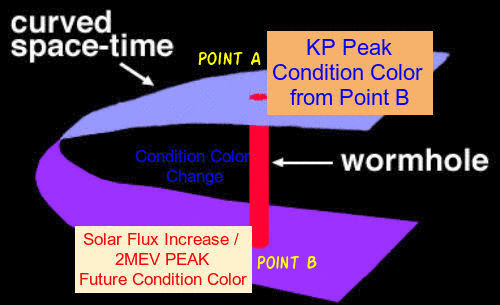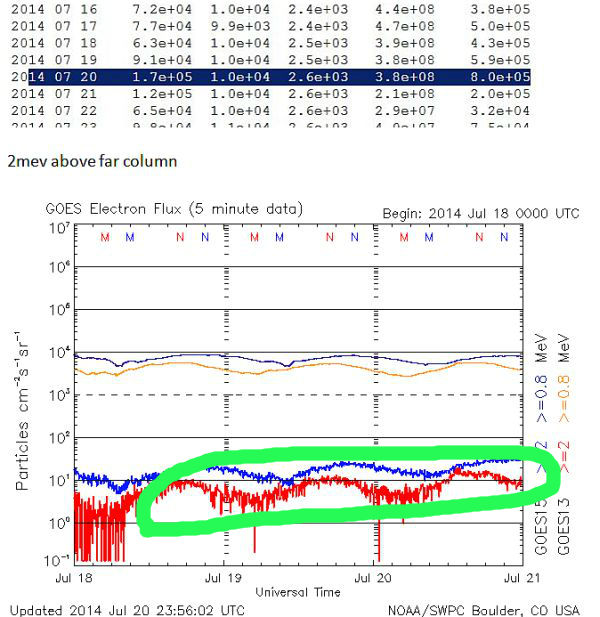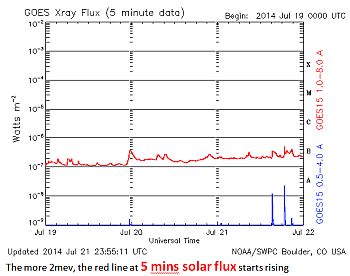News
 New Books
New BooksVisit the Books Page on the homepage to See our Latest Releases
Latest Dow Prediction Forecast Analysis - Return to Homepage
View the Analysis for the Dow Prediction for August 4th, 2014
Recommended Reading to understand Cross Point Periods
A Review of the Dow Prediction on August 13th, 2014.

Does Higher 2mev cause Increased Solar flux and Vice Versa?
If this is true, than we have a rough guide to know when the solar flux will increase, as 2mev forecasts are good for up to 3 days in advance. It just happens that this is true. Below is a short summary of the data that occurred on July 20th, 2014. I used this date because the data is very clear.
As we can see a peak in 2mev at 8.0 and when we look at the GOES electron flux, we see the red line climbing higher on this date.

Now was this change reflected in the solar flux levels? Yes, we see the red line slowly rising on the 20th and heading upwards, showing proof that higher 2mev's give a rough idea of when the solar flux is going to rise also.

Sources:
Solar Flux Warehouse:
http://www.swpc.noaa.gov/ftpmenu/plots/xray.html
Real Time 2mev protons
http://www.swpc.noaa.gov/rt_plots/elec_3d.html
Complete Solar Warehouse
http://www.swpc.noaa.gov/ftpmenu/warehouse.html
Electron Warehouse
http://www.swpc.noaa.gov/ftpmenu/warehouse/2014/2014_plots/electron.html
Recent 2mev archive:
http://www.swpc.noaa.gov/ftpdir/indices/old_indices/
Real time solar flux
http://www.swpc.noaa.gov/rt_plots/xray_5m.html
Real time electron flux
http://www.swpc.noaa.gov/rt_plots/elec_3d.html
Real Time 2mev protons
http://www.swpc.noaa.gov/rt_plots/elec_3d.html
Thank You for visiting our site and reading our articles and new update. If this information has helped you or someone you know, please consider contributing to this site. Your contribution will ensure the continued publishing of unique and quality articles at no cost to all of our visitors and regular readers.
